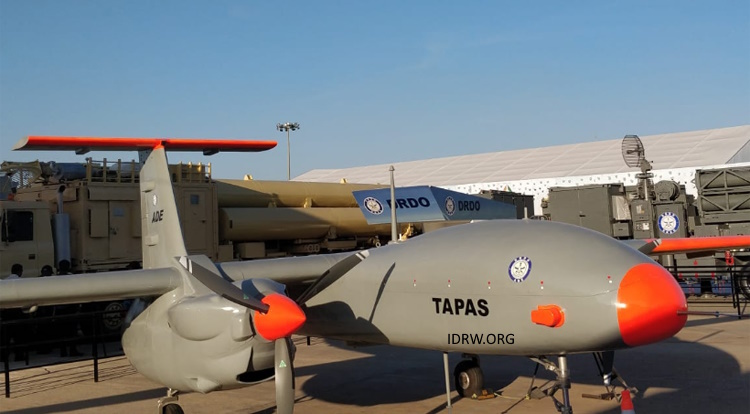SOURCE: AFI

The Aeronautical Development Establishment (ADE), a key laboratory under India’s Defence Research and Development Organisation (DRDO), is actively working on integrating advanced radar systems with the TAPAS (Tactical Airborne Platform for Aerial Surveillance) Unmanned Aerial Vehicle (UAV). The radar systems in focus include a Multi-Parameter Phased Array Radar (MPAR) and a Synthetic Aperture Radar (SAR), designed to meet the stringent surveillance needs of the Indian Navy. This development comes in the wake of the Navy’s interest in procuring 10 TAPAS UAVs, primarily to bolster maritime surveillance in the strategically significant Andaman and Nicobar Islands.
The Indian Navy’s interest in TAPAS stems from the need for persistent and high-resolution intelligence, surveillance, and reconnaissance (ISR) in the Indian Ocean Region (IOR), a vital maritime area where Chinese submarines and warships have frequently been sighted. TAPAS, with its long-endurance capabilities and the addition of MPAR and SAR radar systems, will play a crucial role in enhancing India’s ability to monitor and protect its maritime borders.
The Andaman and Nicobar Islands hold a key geographical advantage for India, providing access to some of the busiest sea lanes in the world. These islands act as a natural watchtower over the eastern Indian Ocean, and as China’s presence in the region grows, they become even more critical for India’s maritime security. The Indian Navy aims to deploy TAPAS UAVs from these islands to maintain real-time surveillance of the waters and detect any incursion by Chinese submarines or warships entering the IOR.
1. Multi-Parameter Phased Array Radar (MPAR): MPAR is a sophisticated radar system designed to perform multiple surveillance functions simultaneously. Unlike traditional radars, which have a fixed beam, MPAR employs electronically steered phased array technology, allowing it to switch between different scanning modes without moving the radar antenna physically. This makes MPAR highly versatile for naval surveillance missions.
- Simultaneous Tracking: MPAR can track multiple targets at once, be it surface ships or airborne threats. This makes it invaluable for monitoring busy maritime environments, where the movement of vessels needs to be tracked in real-time.
- Rapid Scanning: The radar’s phased array capability allows for faster scanning of large oceanic areas, enabling early detection of threats such as Chinese warships or submarines.
- All-Weather Capability: MPAR is designed to function effectively in diverse weather conditions, ensuring uninterrupted surveillance during monsoons or rough sea states often experienced in the IOR.
2. Synthetic Aperture Radar (SAR): SAR is another advanced radar technology, which uses the motion of the UAV to simulate a much larger antenna, thus providing high-resolution imagery of the earth’s surface, including maritime targets.
Long-Range Detection: TAPAS, equipped with SAR, can cover vast stretches of ocean, detecting potential threats over a wide area. This long-range capability is essential for early warning, giving the Indian Navy the time and information needed to respond to hostile threats.
Integrating MPAR and SAR radars on the TAPAS UAV will significantly enhance India’s Maritime Domain Awareness (MDA). The ability to continuously monitor vast expanses of the Indian Ocean from the Andaman and Nicobar Islands will provide the Indian Navy with crucial intelligence on the movements of Chinese vessels, submarines, and other maritime threats.
This surveillance capability will also feed into India’s larger anti-submarine warfare (ASW) strategy. The TAPAS UAVs, with their extended endurance and real-time radar feeds, will work in coordination with Indian Navy ships and aircraft, forming a comprehensive network to detect, track, and counter potential Chinese incursions into Indian waters.
High-Resolution Imaging: SAR is known for its ability to generate detailed images, even through clouds, darkness, or rain. This capability is critical in detecting stealthy platforms like submarines or smaller surface vessels that may attempt to evade detection.
Surface and Subsurface Detection: SAR can penetrate surface layers and is capable of detecting submarines operating at shallow depths. In the case of Chinese submarines, which often attempt to enter the IOR undetected, SAR’s ability to pick up subtle disturbances on the water surface or slight temperature variations is a major advantage.